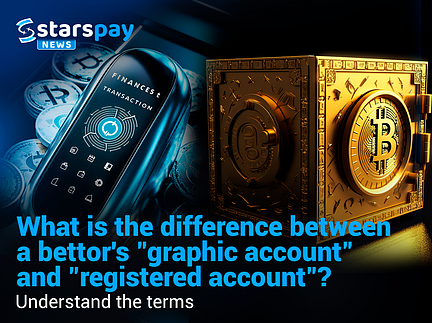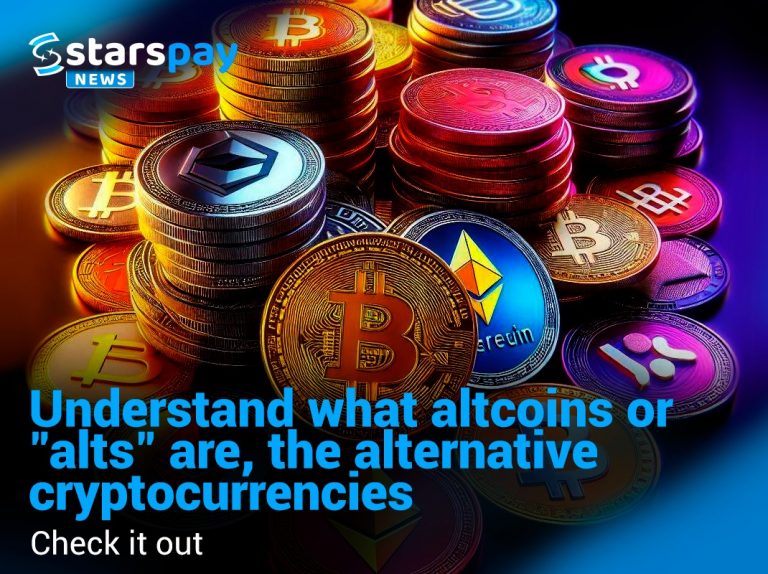In the past 15 years, cryptocurrencies have changed the way fund transfers are viewed in the digital space. The “crypto world” has experienced a surge of interest, bringing various advantages such as security, decentralization, and speed. During this period, hundreds of cryptocurrencies have emerged, with many of them falling by the wayside. On the other hand, some digital currencies have established themselves firmly and represent trillions of reais in volume.
Do you work with cryptocurrency exchanges and want to optimize your payment area? Get in touch with StarsPay.
As with anything involving large financial sums, it’s always important to emphasize the need for security measures to avoid falling victim to online fraud. StarsPay works with cryptocurrency exchanges, providing financial services to these companies, supporting transactions in multiple currencies, and standing out for its strong security processes.
Below are the top five cryptocurrencies by market capitalization, according to CoinMarketCap data accessed on October 14, 2024.
Bitcoin (BTC)
The first and most well-known cryptocurrency in the world, Bitcoin has a market cap of over R$7.3 trillion. The currency was created in 2009 by an individual or group of people under the pseudonym Satoshi Nakamoto. It operates on a decentralized network called blockchain, which publicly and securely records all transactions. Bitcoin’s goal is to be a form of digital money without the need for intermediaries, such as banks or governments. Due to its anonymous nature, it’s impossible to know precisely how many people hold Bitcoin in their digital wallets and/or exchanges, but an estimate from the website BiTBO puts this number at over 100 million people.
Ethereum (ETH)
Launched in 2015 by Vitalik Buterin, Ethereum currently has a market capitalization of over R$1.7 trillion and operates differently from Bitcoin. Rather than being primarily used as a digital currency, Ethereum was designed as a platform for creating smart contracts and decentralized applications (dApps). Its network allows developers to create new tokens and run complex projects based on blockchain technology. As such, the ETH network is the foundation upon which many alternative digital currencies (the so-called “alts”) were built. According to data from Bitwise, the ETH ecosystem saw a significant jump in daily users in early 2024.
Tether (USDT)
The third-largest market cap belongs to Tether, known by its symbol USDT, currently representing almost R$670 billion. It also differs from Bitcoin and Ethereum because it is a stablecoin, meaning its value is tied to a stable asset—in this case, the US dollar (USD). USDT is widely used in exchanges as a reference currency for trading against other cryptocurrencies. In this way, it’s possible to avoid the volatility of the crypto space while keeping funds in digital currencies, making it more convenient for new trades.
BNB (Binance Coin)
BNB is the native token of Binance, one of the world’s largest cryptocurrency exchanges, with a current market capitalization of R$480 billion. The coin was launched in 2017 as an ERC-20 token on the Ethereum network but later migrated to Binance’s own blockchain, known as Binance Smart Chain (BSC). The primary uses of the cryptocurrency are within the exchange’s ecosystem, such as paying discounted transaction fees on the platform and participating in token sales. In 2024, Binance celebrated reaching 200 million users on its platform.
Solana (SOL)
Solana is a high-performance blockchain platform focused on scalability, with a current market cap of R$411 billion in its native token, SOL. Launched in 2020, Solana is a network aimed at smart contracts and dApps, similar to Ethereum, but with a greater focus on efficiency, standing out for its speed and low transaction costs. In June 2024, the company announced an investment of over R$5 million in Brazil to support content creators and educators in the crypto space.
The future of the crypto market
Now that you know more about the leading cryptocurrencies used worldwide, it’s easier to understand the versatility involved in the digital currency market. Different blockchains and platforms have distinct areas of focus. They can bring more speed, security, and convenience to processes that were once complex, such as cross-border payments, and enable the creation of new technologies that integrate into the digital financial world to make life easier for users.
Additionally, the market capitalizations mentioned provide a broader understanding of the size of this universe, which is not expected to slow down anytime soon. New technologies and investments are made daily, helping to spread the concept that digital currencies go beyond mere speculation—they can generate real benefits for people.
Contact StarsPay’s sales team now at [email protected] and learn how we can make a difference for your company.





